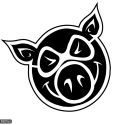I have made progress with improving my draw over the past year or two, and wanted to share some of what has worked for me. This is focused on an open draw from a Production/Carry Optics style rig.
First, the equipment. I use a Blade Tech or JMCK Kydex shell, mounted on a BOSS hangar, and use a CR Speed belt. I believe it is important to set your holster in the same place, for the sake of consistency. Here is what my rig looks like.
Attachment 33722
Attachment 33723
Attachment 33724
Attachment 33725
I wear my holster as far forward as is legal under Production/CO rules, and I have a slight muzzle forward cant to try to make for a natural wrist angle. Mounting the holster on a dedicated belt makes the holster and mag pouch positions consistent.
When I stand facing the target, I try to find my natural point of aim, and find that helps with side to side alignment. I try to keep my body very upright, as hunching slows my draw. There is a conflict between drawing and shooting, which I resolve by drawing upright, then leaning more forward shooting multiple shots. This is a screenshot of how upright I am at the beginning of my draw.
Right before the draw, I focus on two things — remaining calm, and listening actively for the START of the beep. It has taken me years to learn, but trying to go fast only slows me down and makes me more likely to miss my grip. You want enough repetitions of your draw, so that it happens at a subconscious level. Actively listening for the beginning of the beep gives me something for my conscious mind to focus on.
The traditional USPSA start position was “hands relaxed at sides.” That always seemed odd, since a draw is not exactly a relaxed action. With the new 2018 classifiers, the specified start position appears to be “hands below belt.” I like to start with my fingers spread, rather than clenched, since that saves me having to open my fingers at the start of the draw.
At the beginning of the beep, I stare at a spot on my target and aggressively bring my hands up the back of the holster, hit the back of the grip AND wrap my thumb over the top of the slide to trap the pistol. That differentiates my aggressive start from a scoop draw. This is a screenshot of my thumb wrapped.
Slight degression on barrel length. I find it easier to be more aggressive on my initial contact with a pistol with a longer barrel pistol like a 34, than something like a 19. That is because more barrel anchors the pistol, where with less barrel I have to be more careful with my initial contact with the grip, lest I bump the pistol with a bad grip. I deal with that as best as I can with the VP9 by cranking down more tension on the two adjustable tensions screws on my holster.
Once the muzzle clears the holster, I try for as direct a path as possible to the target. That is different than a classic press out, where you get the sights into your vision as soon as possible, and use vision as primary in guiding the pistol onto target. I am using index, and a lifetime of coordination between my hand and eyes. As the pistol nears extension, I do a mini compressed press out for the very last bit of my presentation, where I work sights/trigger AND continue aiming as I attempt to make the shot break as the pistol stops on target.
Here is some video of draws to an eight inch steel at 25 yards. You can see my upright position, my hands open at the start, and working the trigger so the shot breaks as the pistol reaches extension.
Not obvious on the video, is I am trying to get a quarter panel grip with my support hand, and cam with my support hand. This helps with recoil control and allows me to be more aggressive with the trigger.
A few years ago, a really fast flat out draw for me was about .75. As I have refined my technique, including listening actively, starting upright, exploding for the initial grip, minimizing the time from touching the pistol to getting it moving, and by doing a compressed press out at the very end of my extension, so my shot breaks at extension, I have my flat out draws, when relaxed and happy, into the upper .40’s. Here is a short video of my flat out draw.
My draw is still under construction, and my goal is a little bit to speed my max/peak performance, but mostly to drive down my consistent draw time under match conditions. Since I started also shooting Steel Challenge, I am working my hands up, surrender draw, which is slower than my hands down at side draw.
Hopefully this gives those interested in improving their OWB open draw some things to think about, and provides encouragement for what imorovement is possible with some effort.




 Reply With Quote
Reply With Quote




